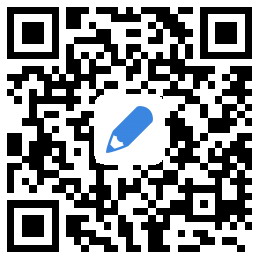2014年考研英語新概念必背作文精選: 伽利略的復生
Lesson 32 Galileo reborn 伽利略的復生
In his own lifetime Galileo was the centre of violent controversy;but the scientific dust has long since settled, and today we can see even hisfamous clash with the Inquisition in something like its proper perspective.But, in contrast, it is only in modern times that Galileo has become a problemchild for historians of science.
The old view of Galileo was delightfully uncomplicated. He was,above all, a man who experimented: who despised the prejudices and booklearning of the Aristotelians, who put his questions to nature instead of tothe ancients, and who drew his conclusions fearlessly. He had been the first toturn a telescope to the sky, and he had seen there evidence enough to overthrowAristotle and Ptolemy together. He was the man who climbed the Leaning Tower ofPisa and dropped various weights from the top, who rolled balls down inclinedplanes, and then generalized the results of his many experiments into thefamous law of free fall.
But a closer study of the evidence, supported by a deeper sense ofthe period, and particularly by a new consciousness of the philosophicalundercurrents in the scientific revolution, has profoundly modified this viewof Galileo. Today, although the old Galileo lives on in many popular writings,among historians of science a new and more sophisticated picture has emerged.At the same time our sympathy for Galileo's opponents has grown somewhat. His telescopicobservations are justly immortal; they aroused great interest at the time, theyhad important theoretical consequences, and they provided a strikingdemonstration of the potentialities hidden in instruments and apparatus. Butcan we blame those who looked and failed to see what Galileo saw, if weremember that to use a telescope at the limit of its powers calls for longexperience and intimate familiarity with one's instrument? Was the philosopherwho refused to look through Galileo's telescope more culpable than those whoalleged that the spiral nebulae observed with Lord Rosse's great telescope inthe eighteen-forties were scratches left by the grinder? We can perhaps forgivethose who said the moons of Jupiter were produced by Galileo's spyglass if werecall that in his day, as for centuries before, curved glass was the popularcontrivance for producing not truth but illusion, untruth; and if a singlecurved glass would distort nature, how much more would a pair of them?
伽利略在世時是激烈論戰的中心。但是,自他逝世以來,那場科學上的紛爭早已平息了下來,甚至他和宗教法庭的著名沖突,我們今天也能正確如實地看待。但是相比之下,對于科學史家來說,伽利略只是在現代才變成一個新的難題。
令人高興的是,過去對伽利略的看法并不復雜。他首先是個實驗工作者,他蔑視亞里士多德學派的偏見和空洞的書本知識。他向自然界而不是向古人提出問題,并大膽地得出自己的結論。他是第一個把望遠鏡對準天空的人,觀察到的論據足以把亞里士多德和托勒密一起推翻。他就是那個曾經爬上比薩斜塔,從塔頂向下拋擲各種重物的人;他就是那個使球體沿斜面向下滾動,然后將多次實驗結果概括成著名的自由落體定律的人。
但是,對那個時代的深化了解,尤其是以科學革命中哲學潛流的新意識為依據,進一步仔細研究,就會極大地改變對伽利略的看法。今天,雖然已故的伽利略繼續活在許多通俗讀物中,但在科學史家中間,一個新的更加復雜的伽利略的形象出現了。與此同時,我們對伽利略的反對派的同情也有所增加。伽利略用望遠鏡所作的觀察確實是不朽的,這些觀察在當時引起了人們極大的興趣,具有重要的理論意義,并充分顯示出了儀表和儀器的潛在力量。但是,如果我們想到,使用一架倍數有限的望遠鏡需要長期的經驗和對自己儀器的熟悉程度,那么我們怎么能去責備觀察了天空但沒有看到伽利略所看到的東西的那些人呢?某位哲學家曾拒絕使用伽利略的望遠鏡去觀察天空;到了19世紀40年代,有人硬把羅斯勛爵高倍望遠鏡觀測到的螺旋狀星云說成是磨鏡工留下的磨痕。難道反對伽利略的哲學家比詆毀羅斯勛爵造謠者應受到更大的譴責嗎?如果我們回想一下伽利略之前的幾個世紀期間,曲面鏡一直是一種用于產生幻影而不是產生真象的把戲裝置,那么我們就會原諒那些當初把伽利略觀察到的木星衛星說成是伽利略用他的小望遠鏡變出來的人們,何況一片曲面鏡就可歪曲自然,那么伽利略的兩片曲面鏡對自然的歪曲又該多大呢?
本文地址:http://www.hengchuai.cn/writing/englishtest/kaoyan/58847.html




